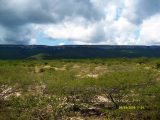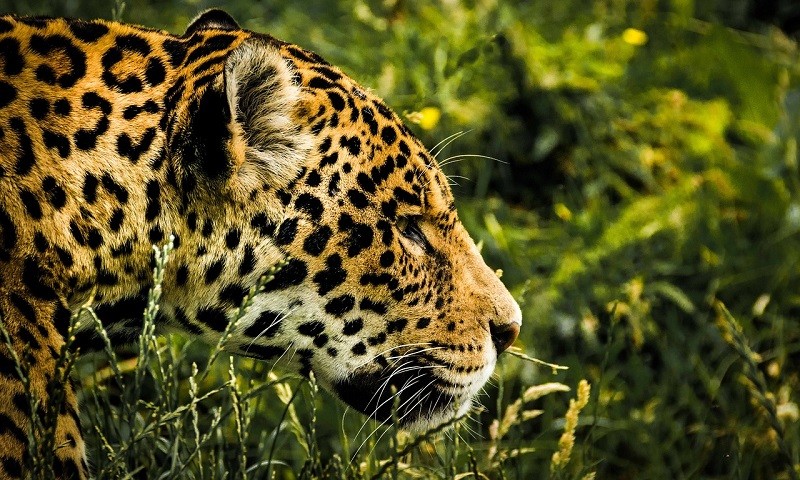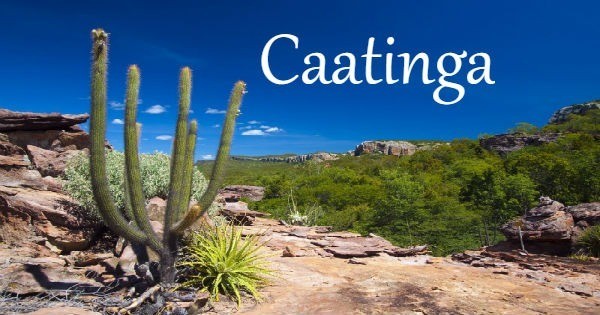Este post também está disponível em:
Português
English

Caatinga gains two new protected areas, among them, the Boqueirão da Onça National Park in Bahia.
The Caatinga is the only exclusively Brazilian biome, which means that much of its biological heritage does not exist anywhere else on the planet.
Despite this, it is the most unknown by our population and also the most fragile: the unsustainable use of its soil and natural resources and the eternal image of poverty and drought have always helped to maintain its degradation. Currently, only 20% of its native cover remains.
Occupying about 11% of the national territory – 850,000 km2, equivalent to the size of Germany and France combined – the Caatinga covers ten states, mostly in the Northeast: Maranhão, Piauí, Ceará, Rio Grande do Norte, Paraíba, Pernambuco, Alagoas, Sergipe, Bahia and part of Minas Gerais (in the Southeast).
But on 6 April 2018, the Caatinga received a gift.
After more than fifteen years of negotiations for its creation, the decree establishing the Boqueirão da Onça National Park, in northern Bahia, as a 349,000-hectare integral protection conservation unit, was finally published in the Federal Official Gazette.

Next to the park, an Environmental Protection Area (APA) was also created, with 505 thousand hectares.
In total, the two areas together add up to 854,000 hectares. The new units are located between the semi-arid municipalities of Sento Sé, Campo Formoso, Sobradinho, Juazeiro and Umburanas.
Video about “Boqueirão da Onça National Park”

Main characteristics of Caatinga vegetation
- The caatinga is an exclusively Brazilian biome. It covers an area of 850 thousand km², occupying about 10% of the Brazilian territory.
- It is mainly present in the interior of the Northeast region of Brazil and north of the state of Minas Gerais. – It is not uniform throughout the territory where it is present. Although it presents certain common characteristics, it changes according to rainfall, fertility and soil type.
- It is a vegetation formed basically by xerophilous plants, that is, adapted to arid conditions (found in the semi-arid northeast).
- About a thousand plant species have been recorded in the caatinga. According to experts, there may be twice that number.
- One of the main characteristics of caatinga vegetation is that most species lose their leaves during the dry season. It is a resource to reduce water loss during the dry season. – In much of the caatinga the trees are small and widely spaced.
- Most plants have deep roots (to find water at higher depths) and thorns. – Many plant species store water in their stems and leaves to cope with the dry season. Main plant species of the Caatinga: – Palm – Xiquexique – Aroeira – Umbuzeiro – Caroá – Juazeiro – Mandacaru – Cactus.
Boqueirão da Onça National Park
The region known as Boqueirão da Onça in Bahia is one of the last continuous remnants of Caatinga.
With an unusual landscape, it has canyons and ecosystems that are home to rich biodiversity, important springs and caves with ancient rock inscriptions – probably from the Palaeolithic period.
In addition, the national park is home to approximately 900 species of plants and hundreds of other animals such as the ball tatú, the blue macaws, the Moorish cat and the wild cat.
In addition to these, the animal that gives the place its name, it is estimated that 30 jaguars and about 200 pumas live there.
“Although the Caatinga has a wide distribution in the semi-arid Northeast, the largest continuous preserved area of the biome is in Boqueirão, and the new conservation units include part of this territory,” says Rogério Cunha de Paula, from the National Centre for the Conservation of Carnivorous Mammals (Cenap), linked to the Chico Mendes Institute for Biodiversity Conservation (ICMBio).
According to him, the Caatinga has less than 2% of its territory protected by conservation units. Despite the creation of the two new protection areas, environmentalists believe that it is still too little.
Originally, the area proposed for the creation of the units was much larger. The approved project now has the preservation territory reduced to a third of what was intended and increased the size of sustainable use lands.
In a region of the northeastern hinterland where there is no shortage of water and which could become a large environmental reserve, Boqueirão da Onça is a refuge for various animals and preserves rare plant species.
Over the mountains of the Bahian hinterland, an immensity of 800,000 hectares of native forest. The area is so isolated that it has only one inhabitant per thousand square kilometres.
The few villages that exist are rustic, with cobblestone walls, narrow streets and small houses. Residents still make their living by mining amethysts, which are found in artisanal mines. Uninhabited lands as far as the eye can see.
The ideal environment to protect the fauna and flora of the region.
At over a thousand metres above sea level, it is cold in a predominantly hot and dry region. Boqueirão da Onça has one of the largest areas of preserved caatinga on the planet. A type of vegetation that only exists in Brazil. A treasure trove of biodiversity.
In the middle of the bush, a study laboratory for students of botany and biology from universities in the Northeast.
The young people take practical classes to learn more about the region’s unexplored richness. They discover endemic species, native to the region. Canyons that, despite their beauty, inspire solitude. They are isolated spots, far from everything, with no tourism activities. This is where Ibama releases animals seized in captivity.
A crevice between the immense walls of the Boqueirão da onça forms this cinematographic setting. And a rarity in the sertão: water! We are at the source of the River of Pleasures.
It is not perennial. But in rainy weather, it overflows and the water flows into the São Francisco river. Even without the river’s current, at the height of the drought, the Nascente dos Prazeres never lacks water.
“The Boqueirão da onça comprises the last large wild area of all the caatingas in the Brazilian Northeast. The natural vocation of this region is to become the largest extra-Amazonian national park in the country,” says Univasf professor José Alves Siqueira.
Boqueirão da Onça is a refuge for animals in the northeastern hinterland.
Tourism and Travel Guide to Bahia and Northeast Brazil




















